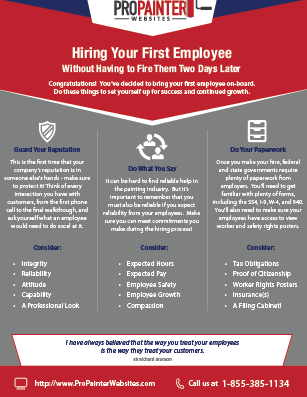Crucial Seasonal Aspects Of Commercial Exterior Paint: What You Must Understand
Crucial Seasonal Aspects Of Commercial Exterior Paint: What You Must Understand
Blog Article
Write-Up Written By-McLamb Bagger
When you're planning an industrial external painting project, seasonal variables can make or break your results. You'll want to take into consideration how temperature level and humidity influence paint application and drying out times. Picking the ideal period can ensure your paint sticks effectively and lasts much longer. But which seasons are genuinely the very best for this kind of job? Allow's check out the crucial elements that can impact your project's success.
The Impact of Temperature on Paint Application
When you're preparing a commercial exterior painting job, the temperature level can significantly affect how well the paint adheres and dries out.
Ideally, you wish to repaint when temperatures range in between 50 ° F and 85 ° F. If it's also cold, the paint may not cure correctly, bring about issues like peeling or breaking.
On housing paint , if it's also warm, the paint can dry as well rapidly, preventing correct adhesion and causing an irregular coating.
You ought to also take into consideration the moment of day; early morning or late afternoon offers cooler temperatures, which can be extra positive.
Constantly check the producer's referrals for the details paint you're using, as they often offer guidance on the excellent temperature level range for optimum results.
Moisture and Its Effect on Drying Times
Temperature level isn't the only environmental factor that affects your industrial outside paint task; humidity plays a significant role too. High moisture degrees can decrease drying out times substantially, influencing the total top quality of your paint task.
When the air is filled with moisture, the paint takes longer to treat, which can lead to problems like bad attachment and a greater danger of mold development. If you're repainting on an especially humid day, be prepared for extended delay times in between layers.
It's vital to keep track of regional climate condition and plan accordingly. Ideally, aim for moisture degrees between 40% and 70% for optimal drying out.
Maintaining these factors in mind ensures your project remains on track and delivers an enduring coating.
Best Seasons for Commercial Exterior Painting Projects
What's the most effective season for your industrial exterior paint projects?
Spring and early autumn are usually your best choices. During these periods, temperatures are mild, and humidity degrees are usually lower, producing perfect conditions for paint application and drying.
Avoid summer's intense heat, which can create paint to dry also rapidly, bring about bad adhesion and coating. Similarly, winter's chilly temperatures can hinder correct drying and treating, risking the long life of your paint task.
Aim for days with temperatures in between 50 ° F and 85 ° F for optimal results. Keep in mind to inspect the local weather forecast for rainfall, as damp conditions can spoil your project.
Preparation around these elements ensures your painting job runs efficiently and lasts much longer.
Verdict
To conclude, planning your industrial external paint jobs around seasonal factors to consider can make a significant difference in the outcome. By scheduling job throughout the perfect temperature levels and moisture levels, you'll guarantee far better adhesion and drying times. Remember to watch on interior house painting and select the right time of year-- spring and early autumn are your best choices. Taking these actions will assist you achieve a durable and professional coating that lasts.
